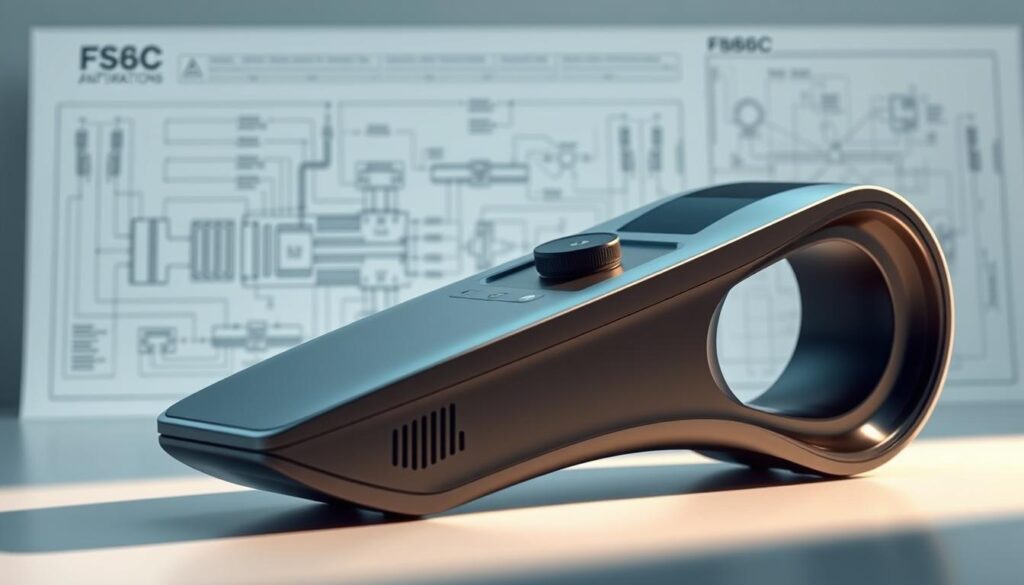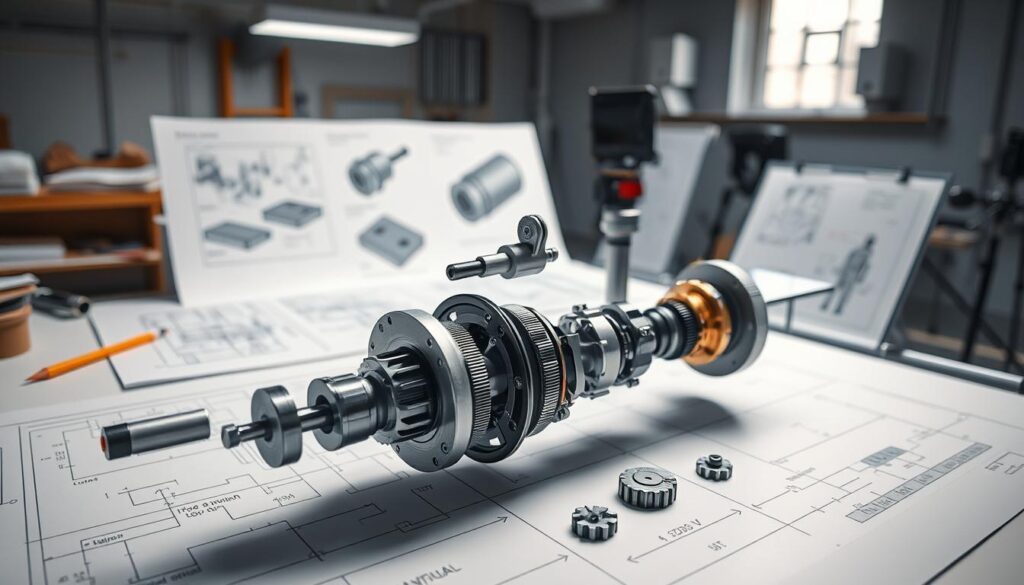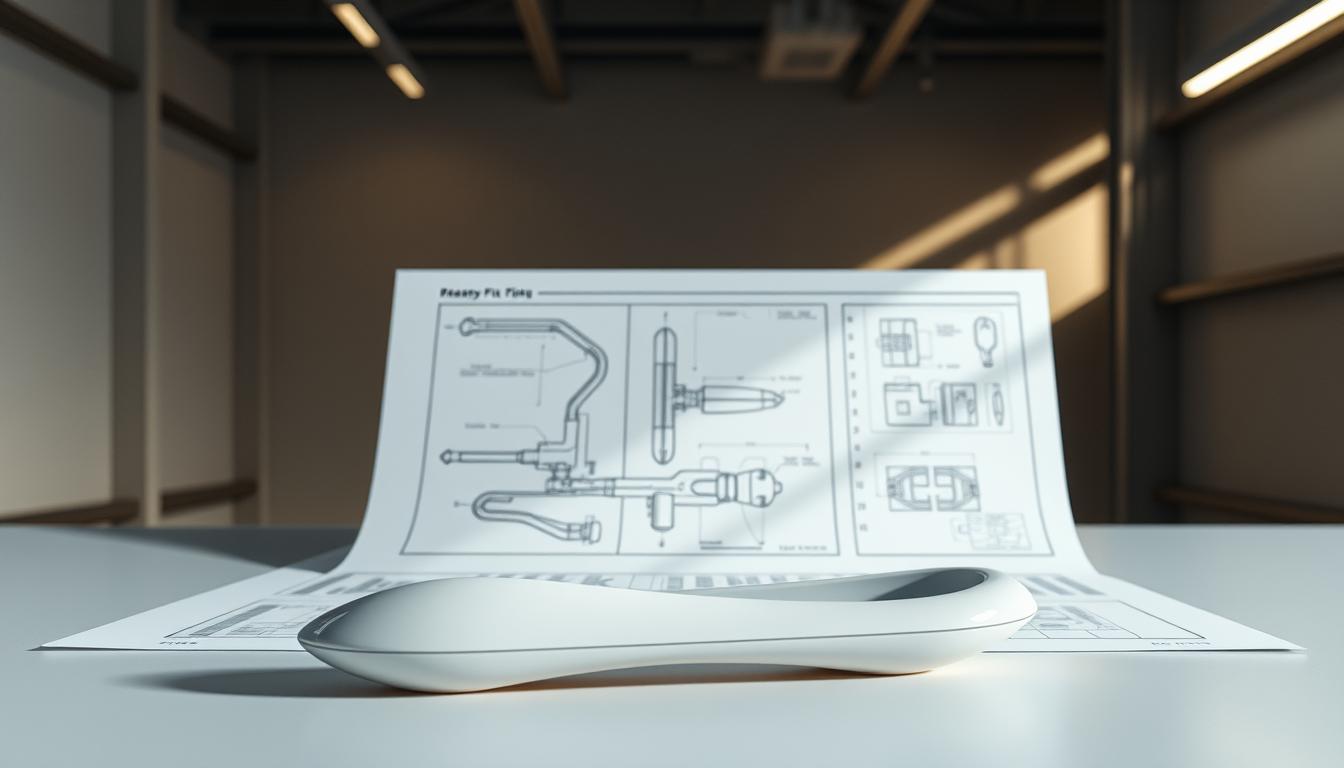Did you know about 70% of product failures are due to design flaws? This fact highlights the need for Form, Fit and Function Analysis (FFF) in engineering. FFF analysis is a key step in improving products. It checks a design’s form, fit, and functionalities early on. This helps companies succeed with new products in the long term in the market.
ملحوظة: it must be distinguish from the “Forms Follow Function" أو "الشكل يتبع الوظيفة” (also FFF) an important concept in product design and also much present innovation.world
النقاط الرئيسية
- Form, Fit and Function Analysis is essential for identifying early design flaws.
- Implementing FFF can lead to significant product or system optimization.
- The methodology ensures compliance with quality المعايير and is part of V&V or QMS.
- Enhanced compatibility improves overall product performance and maintenance.
- Proactive engineering evaluation, such as FFF, is one of the method to mitigates project risks.
Introduction to Form, Fit and Function Analysis
Form, Fit and Function Analysis is very important in engineering and making new products. It checks if a part or piece follows its design well, looking at size, how it joins with other parts, and how it works.
- The form part: means we understand its exact physical definition.
- The fit part: looks at how easily parts can be put together.
- The function part: focuses on what the product does and how well it does it.
Using Form, Fit and Function Analysis helps make better design choices. Engineers can spot problems early. This means designs get better and making things costs less.
History of F3 or FFF in Military Applications
The history of 3F in the military dates back to when reliability and interchangeability were identified as vital.
It uses Form, Fit, and Function analysis to make sure crucial parts meet both tough specific military standards and were interchangeable between suppliers and in the battle field. This method has grown with military tech, improving how we evaluate engineering.
FFF is key for weapons, communication devices, and vehicles in the military. These items need thorough engineering checks to meet performance standards.

1 – The Concept of Form
The fist part of the analysis, the Form, focuses on the definition of the part itself. This includes its geometry, so as all its properties:
- Dimensional specifications: precise measurements such as length, width, height, and diameter that define the size of the component.
- Visual Appearance: surface finish, color, texture, طلاء, and other aesthetic attributes that contribute to the part’s external look.
- Material Properties: the inherent characteristics of the material used, such as hardness, elasticity, and thermal conductivity, that affect the part’s form.
Applying GD&T in Form and Fit
Geometric Dimensioning and Tolerancing, or GD&T, is a way to describe the shape and size of parts and how they fit together. It sets rules for defining what’s acceptable in design, making sure everything assembles as planned. Learning GD&T is key to creating products that look, fit, and work right.
- What is GD&T: GD&T is the normalized mechanical symbols used in design drawings and models. It tells engineers how the part is defined and the allowed changes in shape, direction, and placement of product parts. With these standard symbols, engineers can share complex ideas clearly. This makes sure parts fit together perfectly in the final product.
- Benefits of GD&T in Product Development: it makes quality control better by letting us measure things more exactly. This early detection prevents mistakes, saving time and money on fixing them later. GD&T also helps everyone involved in making a product work together more smoothly. This leads to faster production times.
The “GD part”, geometric dimensioning, of GD&T is key for the Form complete definition.
2 – The Concept of Fit
The “fit” pertains to the compatibility and interaction of a component within its full assembly:
- Interfacing compatibility: ensures that a component can physically connect or integrate with other parts, maintaining proper alignment and engagement within the assembly.
- Dimensional tolerances: involves specifying acceptable limits for variations in size and geometry, ensuring that components assemble correctly without excessive gaps or interference.
- Clearance and interference: defines the intentional spaces or overlaps between mating parts, which are critical for movement, assembly ease, and preventing mechanical binding.
All these functional interdependence valuate how the physical connection of components influences the overall performance and reliability of the system, ensuring that the assembled parts function as intended.

The “T” part”, tolerancing, of GD&T is key for the Fit analyses of the part in its system, so as many manufacturing aspects and quality acceptable deviations.
3 – The Concept of Function
In the context of “Form, Fit, and Function” (FFF) analysis, the “function” part refers to the specific purpose or action that the component and its assembly are designed to perform within a system:
- Operational purpose: the primary task or role that the component is intended to execute, such as transmitting power, providing insulation, or facilitating data transfer.
- Performance criteria: the measurable parameters that define the component’s effectiveness, including speed, capacity, efficiency, and reliability.
- Environmental adaptability: the component’s ability to maintain its functional performance under varying environmental conditions, such as temperature fluctuations, humidity, or exposure to chemicals, among many criteria.
- Compliance with standards: adherence to industry-specific اللوائح and final product standards ensure the component performs its intended function safely and effectively.
Functional Requirements
Functional requirements list the must-have features and traits a product needs to meet user and market demands. Knowing these requirements helps designers and engineers make better design decisions and establish a baseline for the last step of the FFF analysis.
Associated to requirements, the performance criteria are the product’s measurable qualities like speed, efficiency, and strength. By adding these criteria to the functional requirements, engineers and reviewers complete the analysis.
Assessing Structural Integrity and Capacity
Part of the “Function” is also checking the structural integrity and capacity is vital for dependable mechanical design. Each component needs to fit well and be strong enough to do their job under different conditions. This process includes:
- Stress analysis: a deep stress analysis can show where designs may weaken.
- Load testing: load tests mimic real conditions to test component limits.
- Failure mode analysis: knowing potential failure points helps refine designs for better durability.

Common Challenges in Implementing FFF Analysis
Putting Form, Fit, and Function (FFF) analysis into practice has its tough spots. Many organizations struggle with issues that lower how well this critical process works.
- Resource and time constraints: conducting thorough FFF analyses, part by part and then together, can be resource-intensive, requiring significant time and expertise, which may be constrained.
- Strong revision control: is key to doing well in...
You have read 67% of the article. The rest is for our community. Already a member? تسجيل الدخول
(وأيضًا لحماية المحتوى الأصلي لدينا من روبوتات الكشط)
مجتمع الابتكار العالمي
تسجيل الدخول أو التسجيل (100% مجاناً)
اطلع على بقية هذه المقالة وجميع المحتويات والأدوات الخاصة بالأعضاء فقط.
فقط المهندسون والمصنعون والمصممون والمسوقون الحقيقيون المحترفون.
لا روبوت، ولا كاره، ولا مرسل رسائل غير مرغوب فيها.
التعليمات
What is Form, Fit, and Function (FFF) analysis?
FFF analysis is a way to check if a part meets its design goals. It looks at dimensions (form), how it fits together (fit), and how it works (function). It’s key because it helps improve designs, makes sure new products are high quality, and ensures they work well together.Through detailed checks, technical analysis fine-tunes designs in a systematic way
What is the history of FFF analysis?
It started in the military, as “3F” analysis or “FFF”, to make sure equipment was reliable and interchangeable. As technology advanced, it became more refined and crucial outside of military uses too.
Glossary of Terms Used
Bill Of Material (BOM): قائمة منظمة تفصل المكونات والتجمعات الفرعية والمواد الخام اللازمة لتصنيع منتج، بما في ذلك الكميات والمواصفات، وتستخدم للتخطيط للإنتاج وإدارة المخزون.
Forms Follow Functions (FFF): مبدأ تصميمي ينص على أن شكل أو مظهر الكائن يجب أن يعتمد في المقام الأول على وظيفته أو غرضه المقصود، مع التركيز على التطبيق العملي وسهولة الاستخدام على الاعتبارات الجمالية.
Geometric Dimensioning and Tolerancing (GD&T): نظام لتحديد وتوصيل التسامحات الهندسية باستخدام الرموز الموجودة على الرسومات الفنية، وتحديد الاختلافات المسموح بها في الشكل والتوجيه والموقع وحجم الميزات لضمان التجميع السليم ووظيفة الأجزاء.
Quality Management System (QMS): نظام منظم من العمليات والإجراءات والمسؤوليات يهدف إلى ضمان الجودة المتسقة في المنتجات والخدمات، وتسهيل التحسين المستمر، وتلبية متطلبات العملاء والمتطلبات التنظيمية.
User Interface (UI): نظام يتيح التفاعل بين المستخدمين وتطبيقات البرامج، ويشمل عناصر مرئية، وأدوات تحكم، وتخطيطًا عامًا لتسهيل مهام المستخدم وتحسين التجربة.











Does F3 analysis really translate well from military applications to everyday product design?!?
التعليقات مغلقة